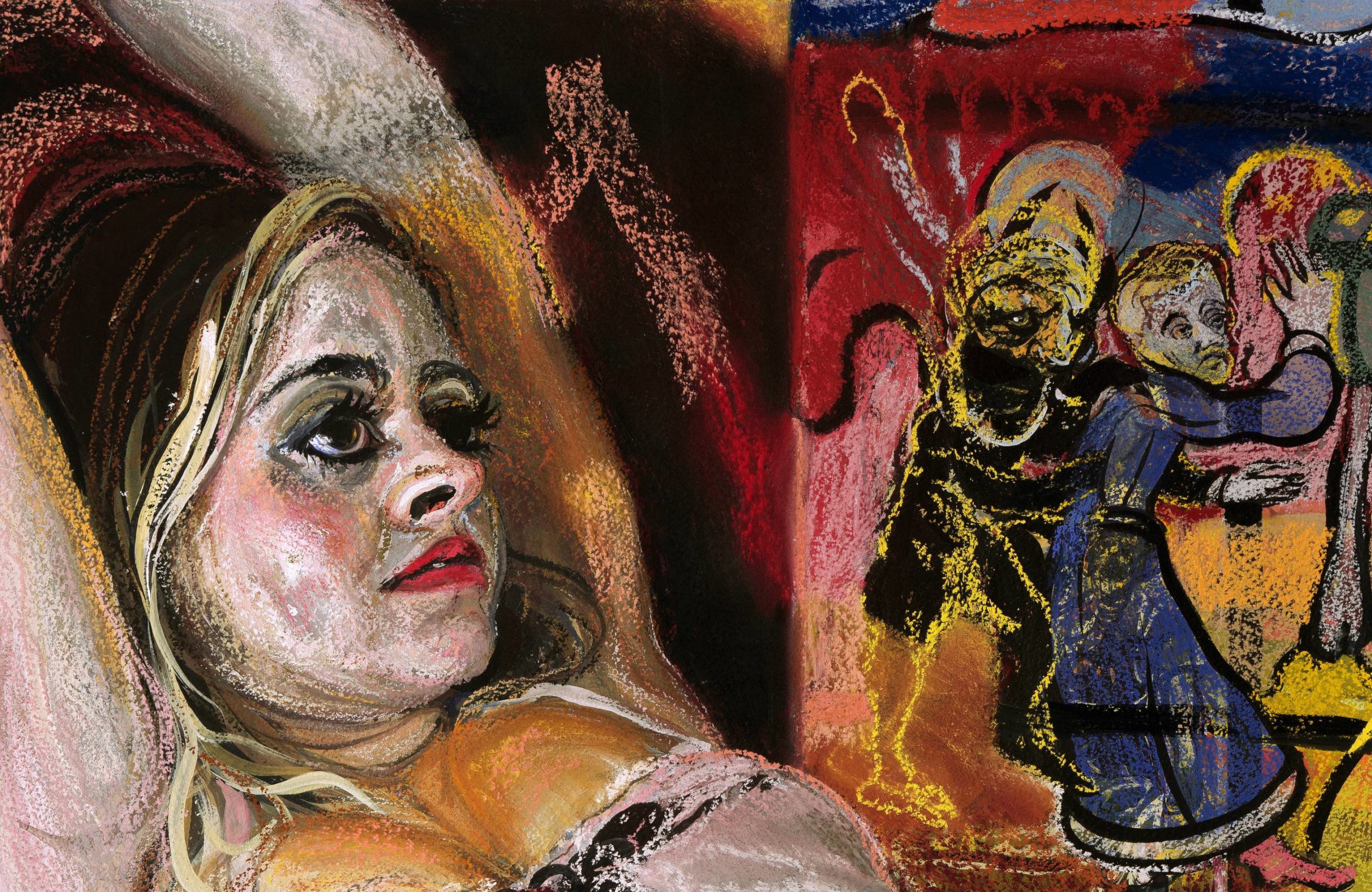Natalie Frank’s exhibition “O” opened at Half Gallery in New York in May. On view through June 16, the show includes a series of gouache and chalk pastel drawings inspired by Story of O, an erotic novel published in 1954 under the pseudonym Pauline Réage. Many assumed the novel—which features scenes of bondage, domination, and sexual exploration—was written by a man, but in 1994 Dominique Aury came forward as the author.
The book is still controversial—both debated and celebrated—and it’s one that Frank rereads every year. After creating paintings and drawings of “The Sorcerer’s Apprentice” and Grimms’ fairy tales, the artist decided she was ready to tackle Story of O. The images she created for this series edge on the surreal, with exaggerated forms, lucid colors, and figures that bleed into patterned backgrounds. There are whips, erotic engagements, and our heroine O in some compromising positions.
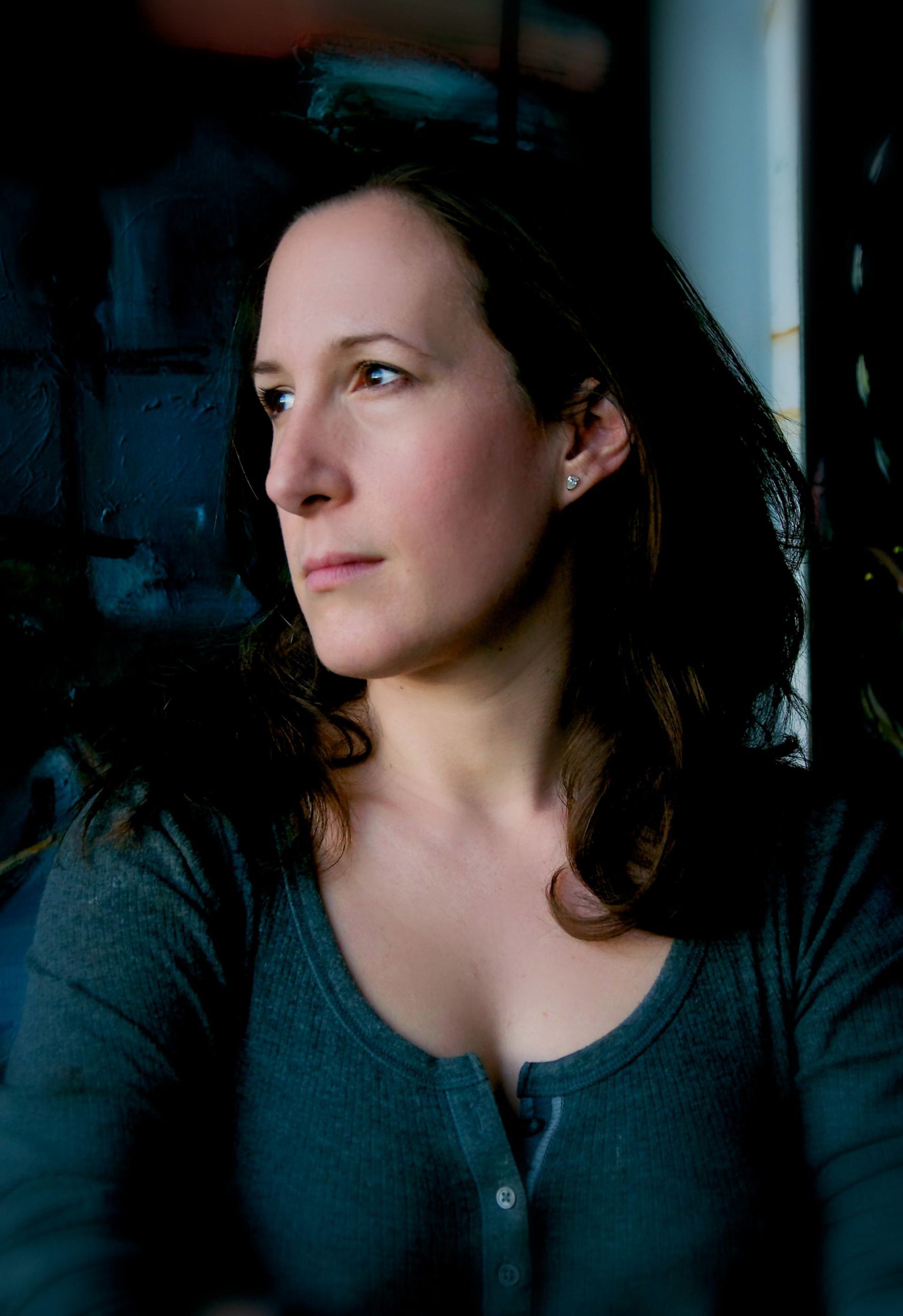
Courtesy of the artist.
The drawings are hung against wallpaper, designed by Frank with Marian Bantjes and produced by Flavor Paper, which depicts confident women in their daily routines. The show is accompanied by an illustrated publication published by Lucia Marquand.
Before the opening this spring, Whitewall visited Frank in her studio in Brooklyn to talk about female desire and her recent outspokenness on issues around sexism in the art world.
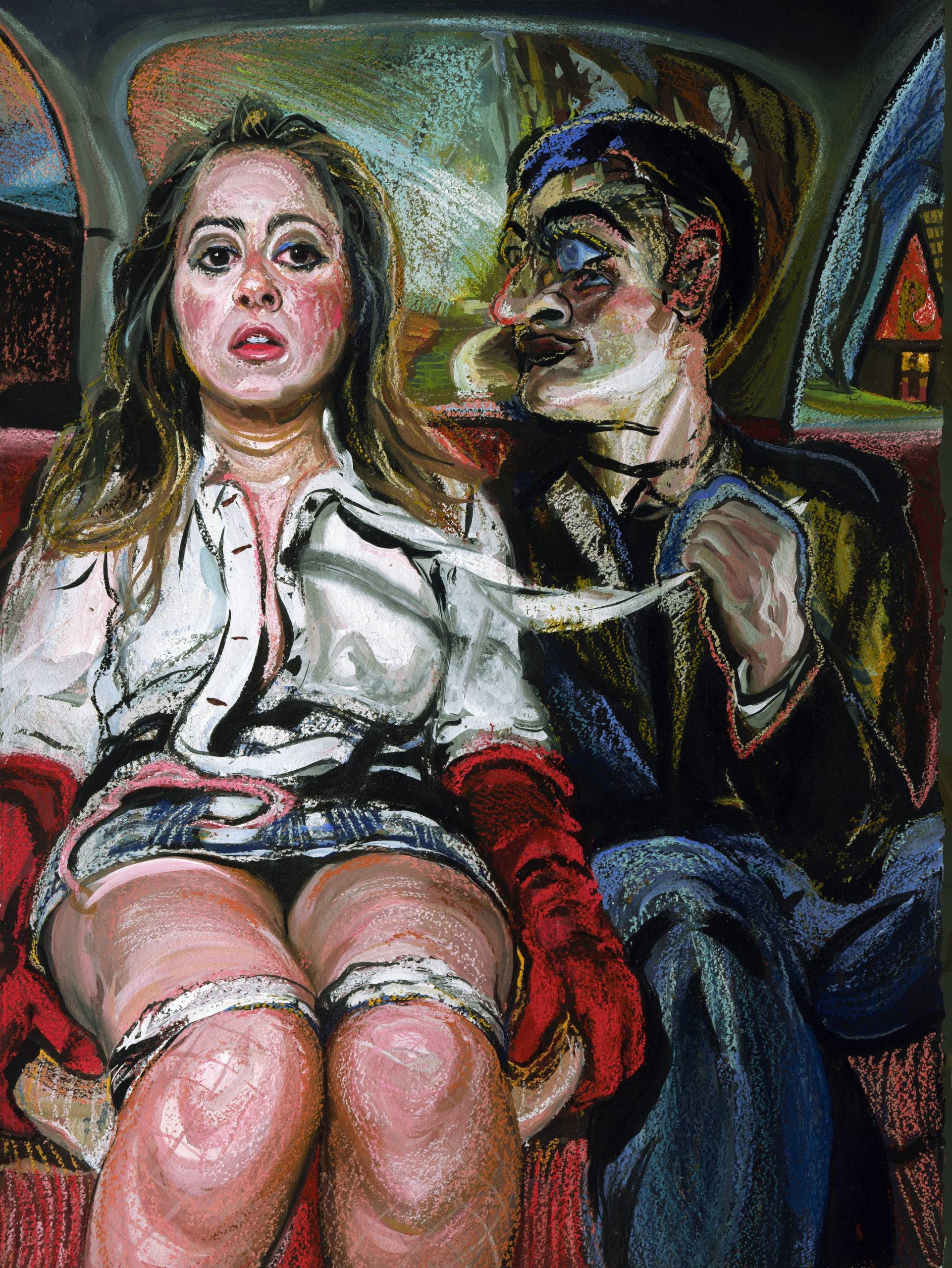
Natalie Frank
Story of O I
2016-17
Gouache and chalk pastel on paper
22 x 30 inches
Photos by Coke O’Neal
Courtesy of the artist
WHITEWALL: What was your first interaction with Story of O?
NATALIE FRANK: I found it in a bookstore. Women in Love was the first erotic book I read. Story of O was the first erotic book I read written by a woman. I remember picking it up, vaguely knowing there was a backstory—that maybe there was some sort of scandal around it—which made it even more compelling to pick up and read. I remember buying it and reading it and carrying it various places. I was very aware to cover the cover so people couldn’t see what I was reading. It was kind of an inside, fun, secretive, and transgressive act.
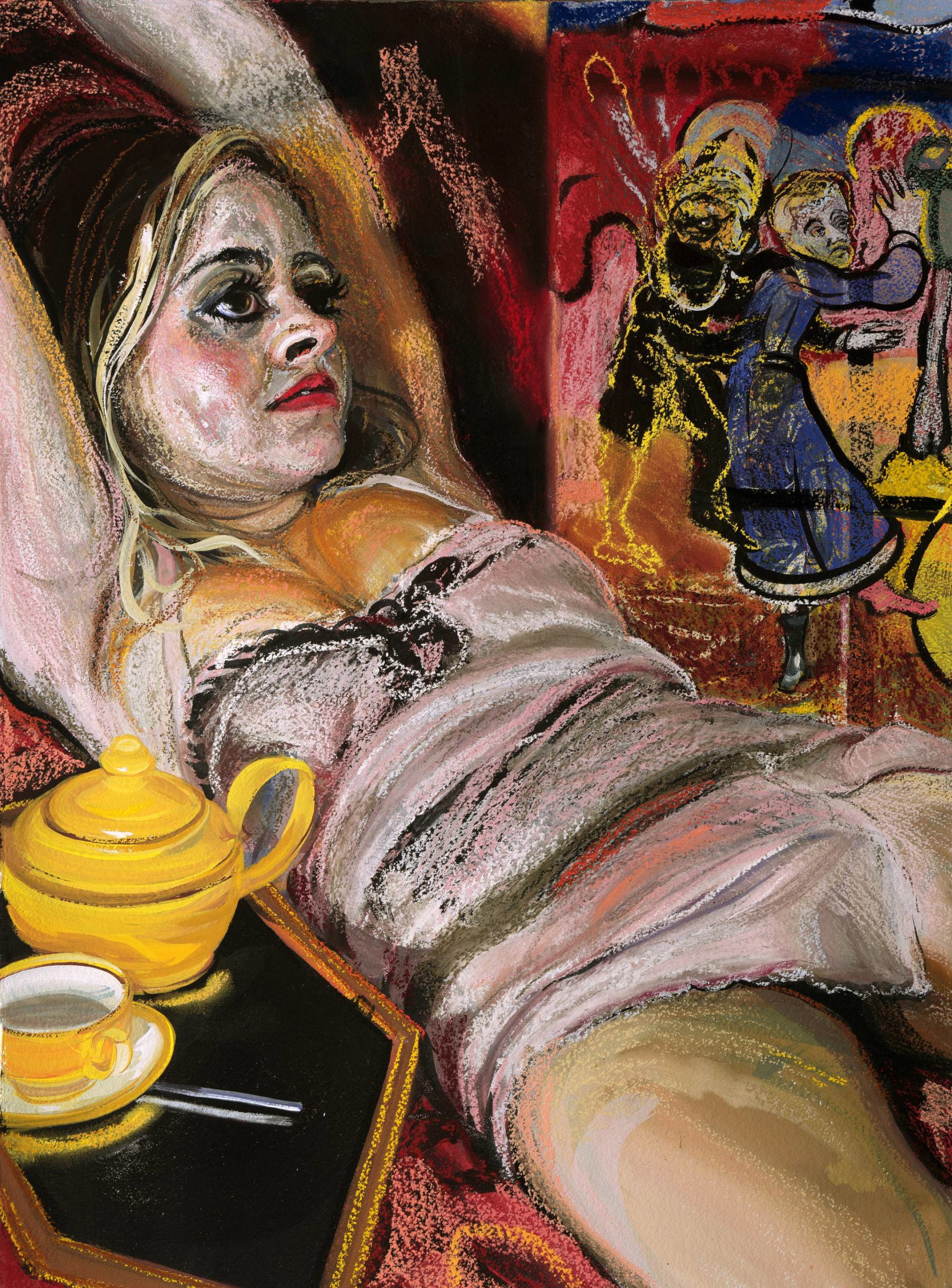
Natalie Frank
Story of O IV
2016-17
Gouache and chalk pastel on paper
22 x 30 inches
Photos by Coke O’Neal
Courtesy of the artist
WW: What made you want make work about it?
NF: There are two books I read every year, and Story of O is one of them. My understanding of what is going on in the book, the relationships between the characters, has changed a lot since I first read it. For 13 years now, I’ve made work about women and their bodies and sexuality and power. Story of O is like the apotheosis of this set of concerns.
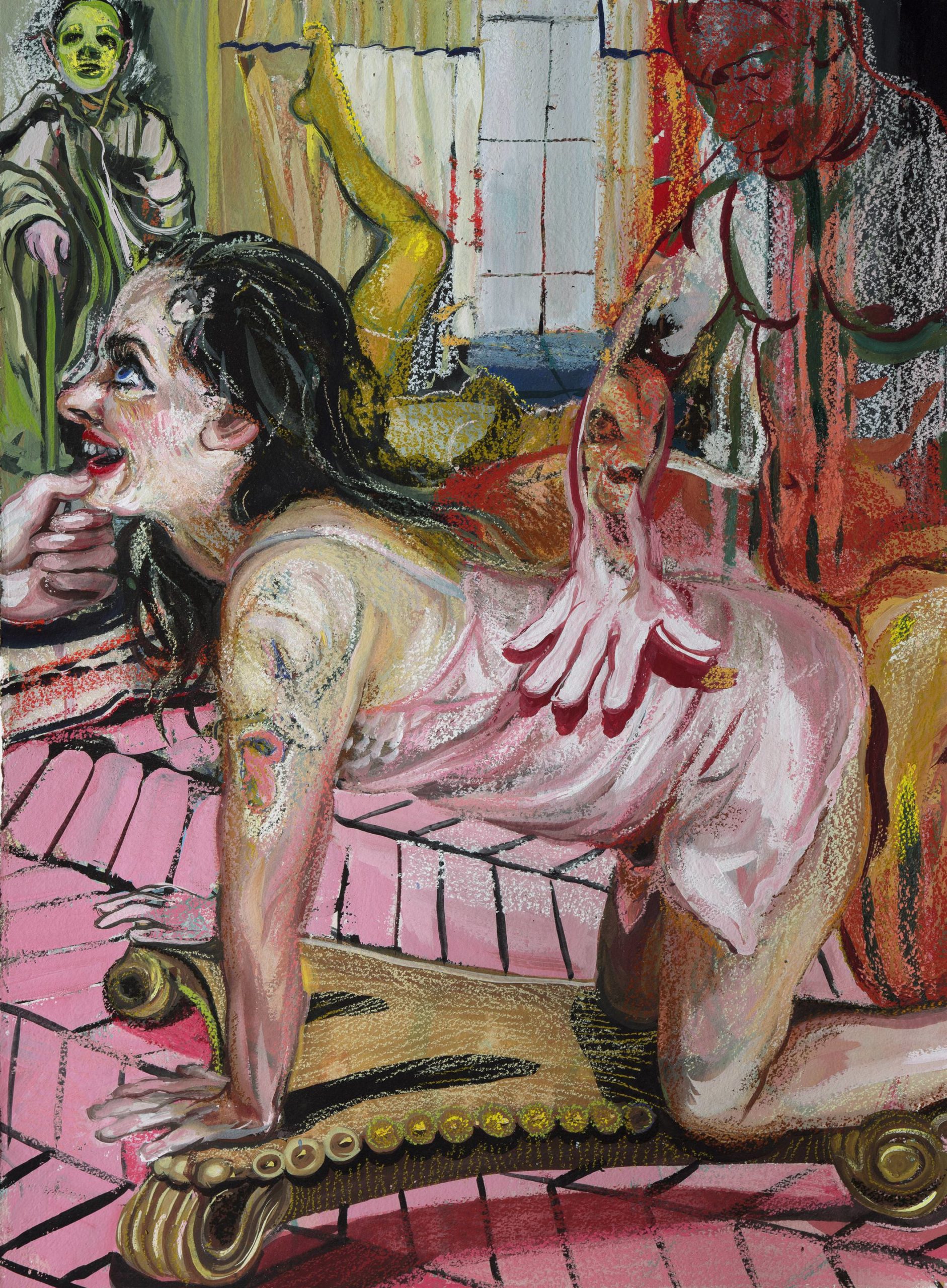
Natalie Frank
Story of O V
2016-17
Gouache and chalk pastel on paper
22 x 30 inches
Photos by Coke O’Neal
Courtesy of the artist
It was always something that I had in the back of my mind that I wanted to do something with. As I’ve started to work more with literature in the past few years—starting with the Grimm’s book and group of drawings, then “The Sorcerer’s Apprentice”—the idea that I could take this book and bring it to life through drawings came about. I knew I could do it, and it felt like that was the right medium for it.
The wallpaper [by Flavor Paper, on which the works are hung at Half Gallery] comes into that, too. I’m more and more interested in creating environments with my work. I did that for a while with sculptural objects, and I was doing that with the scale of my larger paintings. But this idea of creating wallpaper, drawings, and a book feels like something that has more facets.
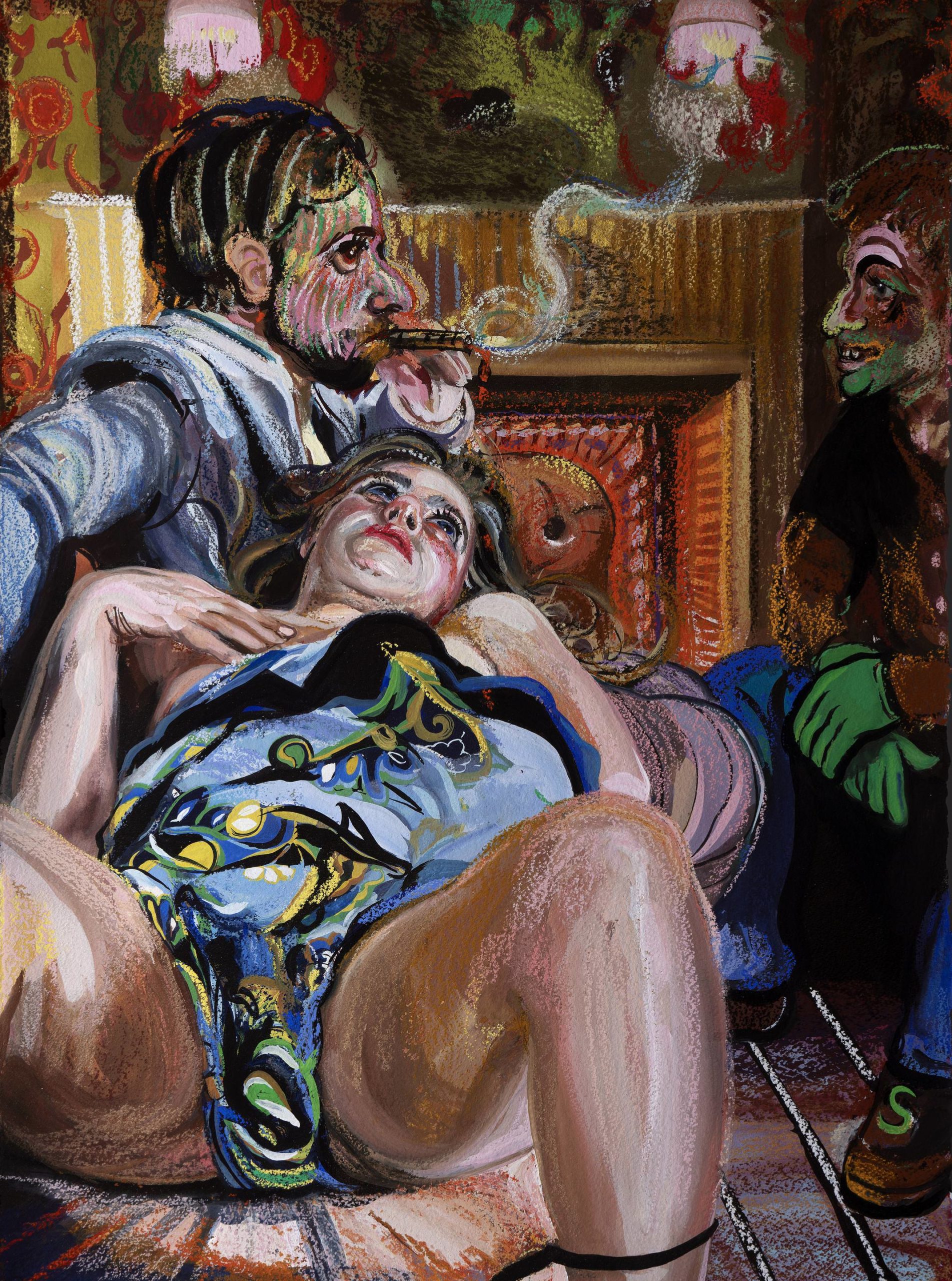
Natalie Frank
Story of O VI
2016-17
Gouache and chalk pastel on paper
22 x 30 inches
Photos by Coke O’Neal
Courtesy of the artist
WW: Did you explore a new way of working with this series?
NF: I think of this book and this body of work as a contemporary fairy tale for women. So the palette comes out of that. There are teals and reds and stripes; a lot going on, a lot of patterning and marks that become abstraction, but also helps with the movement of the composition.
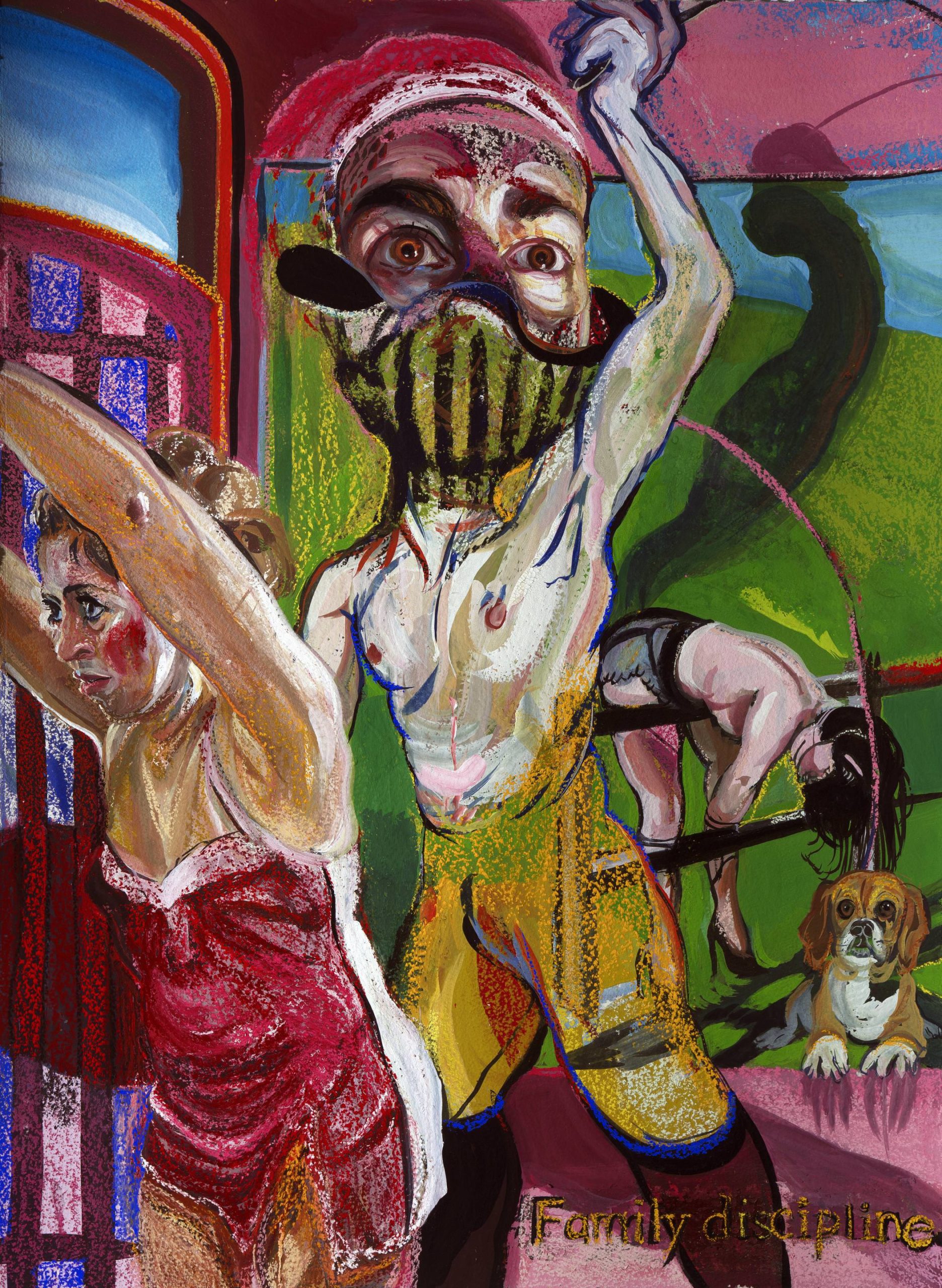
Natalie Frank
Story of O VII
2016-17
Gouache and chalk pastel on paper
22 x 30 inches
Photos by Coke O’Neal
Courtesy of the artist
I’m curious how people will find it. The book was published and banned in the fifties and there have been so many readings of Story of O. It’s kind of wonderful that art can be so provocative and cause so much contentious conversation, and I hope the drawings can do the same.
WW: The scenes you’ve drawn are graphic, sure, but as you mentioned, brightly colored with patterns. They don’t feel dark or aggressive to us, despite the whips.
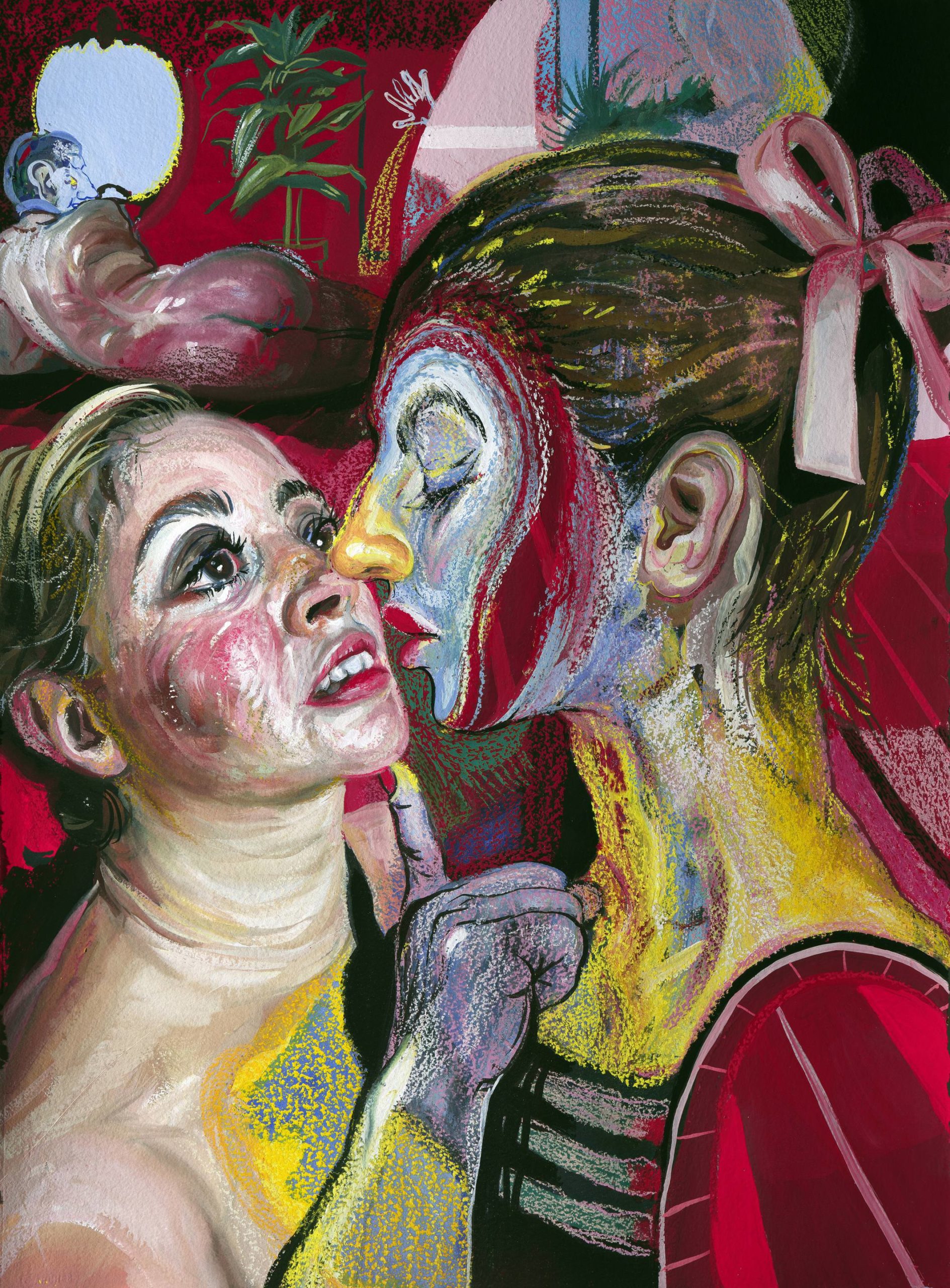
Natalie Frank
Story of O VIII
2016-17
Gouache and chalk pastel on paper
22 x 30 inches
Photos by Coke O’Neal
Courtesy of the artist
NF: I went back to Susan Sontag and “The Pornographic Imagination” and reread that essay; she uses O to talk about the difference in pornography and art. At the end of the day, no women were used in the making of these images; no women were harmed. This is art, it’s imagination, the character goes through transformation. The whole book focuses on her interior life, her physical transformations, her emotional transformations. There’s no doubt that it’s not pornography. It plays with tropes of pornography. Sontag calls it meta-pornography. It takes a laugh at clichés of pornography, but it’s a very serious—to my mind—exploration of a woman’s growing sense of self. I think that’s why many look at it as an icon of sex-positive feminism. It’s a fantastic image of what we’re going through now.
A version of this interview appears in Whitewall‘s summer 2018 Impact Issue, out soon.



